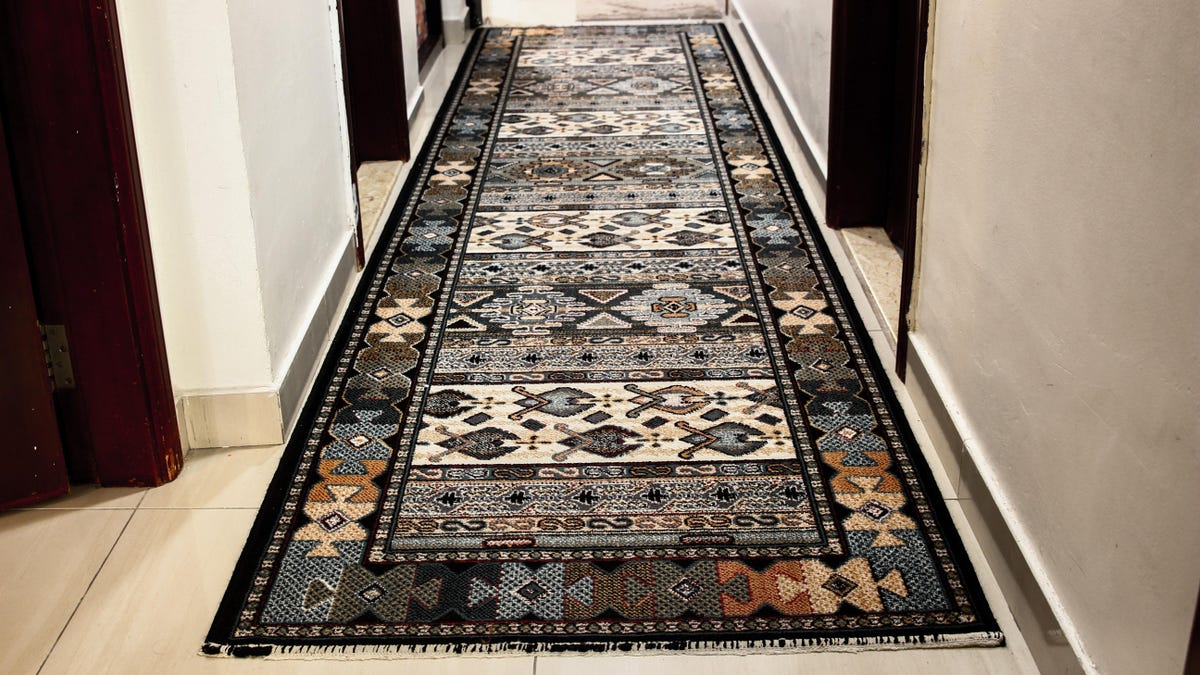The Easiest Way to Fix a Carpet With a Damaged Latex Backing

The latex rubber that forms the backing of many rugs is designed to grip the floor and prevent the carpet from slipping until it begins to fall apart and crumble. This can be caused by many reasons: the cleaning products used, moisture and humidity, or simple wear and tear. And when that latex rubber starts to decompose, you’ll either find a fine white powder under the carpets, or little bits of rubber stuck to the floor that are very hard to remove. It’s annoying, but if the carpet itself is still in great condition, don’t throw it away because repairing the latex backing is actually not that hard. Here’s how to do it for about $50 or less.
The cheapest way to fix the rubber backing on the mat
If $20 is too high a price to keep this carpet, you can simply close the rubber backing if the wear is mostly in the middle of the backing. If you have masking tape (or duct tape if you’re not worried about durability) and leftover fabric, or even heavy paper or kraft paper, you can cut a piece to fit the underside of the carpet, leaving an inch border. or two on the edge exposed. Glue the fabric or paper in place and turn the rug over; the new coating will prevent the rubber from sticking to your floor or leave that powdery residue, and the edges of the rubber, which are still in good condition, should still provide at least some grip to keep the carpet in place. Your carpet will slip a lot more, but this can keep it running, at least temporarily.
How to replace the rubber pad on a rug
A more reliable solution is to add a fresh layer of latex to the wrong side of the carpet. It’s pretty simple – you’ll need four things:
- A can of liquid latex rubber. There are products specifically made for use as carpet backing, but any liquid latex product will do the job, even Flexseal (although it’s probably not the cheapest option if you don’t have leftover material from a previous project).
- Gauze length. This is not 100% necessary, but will make the finished project much more attractive.
- Scissors that you probably already have.
- A brush you don’t mind throwing away.
Take your old carpet and clean the back until all debris is gone. If there are areas of the original backing that are loosely adhered to the carpet, cut them off until only a relatively stable backing remains. Then proceed with the repair:
- Lay the rug over the fabric with the wrong side facing up. Open a can of latex, mix well and start painting on the back of the carpet. Lay the strokes on top of each other and try to apply the most even and smooth layer on the carpet.
- Cut off a piece of gauze almost the same size as the carpet, leaving a small margin (one-eighth of an inch will do) around the edge so the gauze doesn’t stick out from the bottom. Lay it over wet latex and press it against it, then smooth it out with a brush.
- Let it dry for at least 24 hours (48 is better), then apply a second layer of latex on top. You can apply a third coat if you like, but this is not required. Gauze is also optional, but it will strengthen the base and prolong the repair, so it’s worth doing.
Once your new underlay is dry and hardened (about two days after the last coat of latex was applied), you can put it back in place and it will be as good as new.